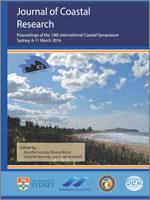Gusmawati, N.F.; Zhi, C.; Soulard, B.; Lemonnier, H., and Selmaoui-Folcher, N., 2016. Aquaculture ponds precise mapping in Perancak Estuary, Bali, Indonesia. In: Vila-Concejo, A.; Bruce, E.; Kennedy, D.M., and McCarroll, R.J. (eds.), Proceedings of the 14th International Coastal Symposium (Sydney, Australia). Journal of Coastal Research, Special Issue, No. 75, pp. 637–641. Coconut Creek (Florida), ISSN 0749-0208.
Indonesia is one of the biggest producers and exporters of shrimp in the world. Shrimp ponds mapping and monitoring will be of critical importance for supporting decision-making regarding the development of sustainable fisheries. Therefore, automatic processing, acceptable quality, and efficient aquaculture mapping are urgently required. The objective of our work is to develop an automatic classification procedure for aquaculture mapping and monitoring, using the Edge Detection Based (EDB) method on very high spatial resolution satellite image. Then we compare the result obtained with EDB with results given respectively by the unsupervised classification method Isodata implemented using ArcGIS (IUC) and a region growing segmentation (RGT) method implemented in SPRING. The broken structure of embankments, dried-up ponds, ongoing development ponds, also abundance of algae and mangrove vegetation in the ponds present significant challenges to establish an accurate map. The aquaculture map provided by EDB successfully identified a high proportion of the existing ponds (> 95%) and overall accuracy of 84% and a kappa coefficient of 0.68. On the other hand, IUC and RGT produced a lower proportion of ponds (between 60 and 80 %) with lower overall accuracy and needed manual refinements. The present study also showed a potential in discriminating different types of ponds. That could be used for a further objective of analyzing the spatiotemporal changes of the ponds and thus improving shrimp farming development.





